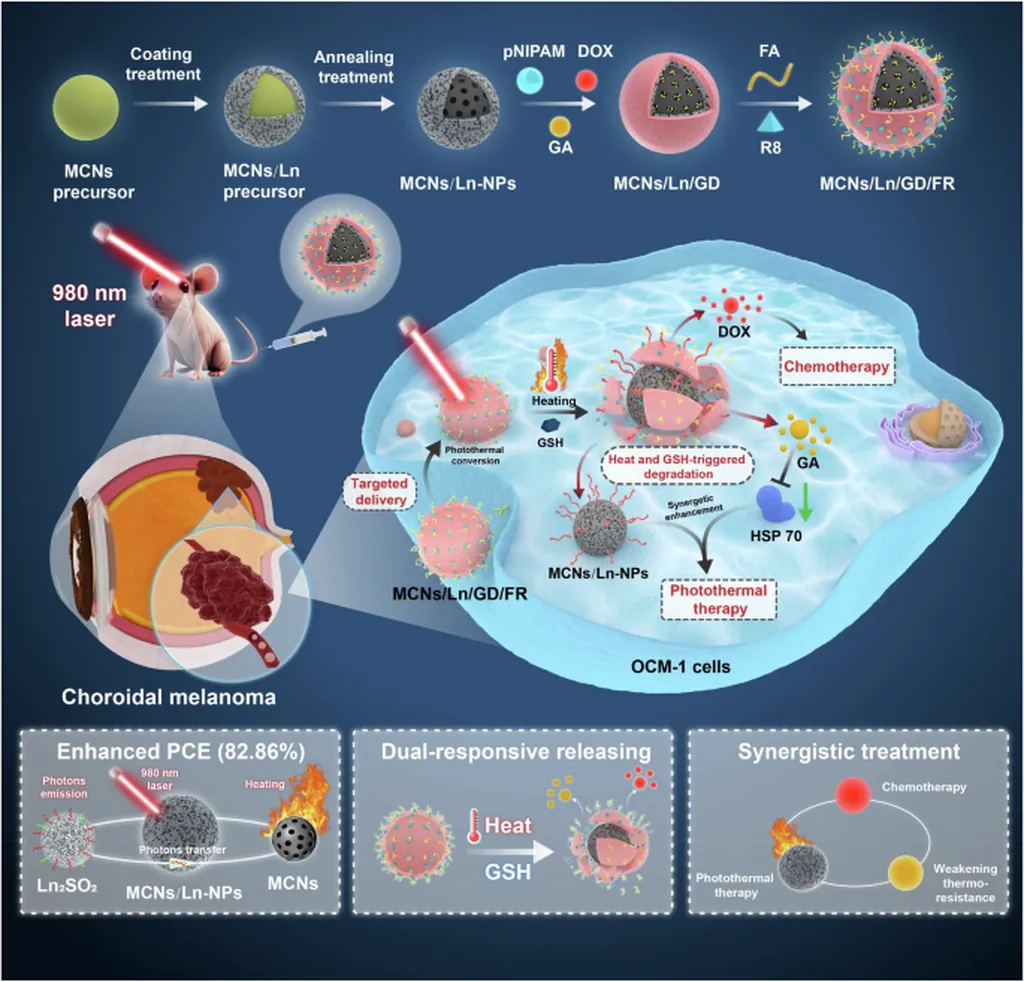Researchers from the University of Lyon, France, have developed a novel approach to cancer treatment that could have significant implications for the energy industry, particularly in the field of medical imaging and radiation therapy. The team, led by Batoul Dhaini and Joël Daouk, has synthesized lanthanide-based nanoparticles conjugated with a photosensitizer called Rose Bengal to enhance the efficiency of X-ray-induced photodynamic therapy (X-PDT).
The study, published in the journal Nanoscale, addresses a critical limitation of traditional photodynamic therapy (PDT): the poor penetration of visible light into tissues, which hampers the treatment of deep-seated tumors. X-PDT overcomes this issue by using X-rays, which can penetrate deeper into tissues. The researchers optimized the energy transfer between a scintillator (a material that converts X-rays into visible light) and a photosensitizer (a molecule that produces singlet oxygen upon light activation) using a process called Förster Resonance Energy Transfer (FRET).
The team chose terbium (Tb) and gadolinium (Gd) as scintillators and Rose Bengal as the photosensitizer. They found that conjugating Rose Bengal directly onto the nanoparticles (AGuIX Ln@RB) and using a spacer arm (AGuIX Ln@spacer arm-RB) increased FRET efficiency. This enhanced energy transfer led to the production of singlet oxygen under both UV-visible illumination and X-ray irradiation. In vitro tests showed that these nanoparticles could induce 52% cell death in human malignant glioblastoma multiforme cells at a concentration of 1 μM Rose Bengal after illumination and irradiation.
Moreover, the researchers conjugated a Rose Bengal-coupled NRP-1-targeting peptide onto the nanoparticles, demonstrating an affinity in the nanometer range. This targeting capability could improve the precision of cancer treatment, reducing side effects and enhancing therapeutic efficacy.
For the energy industry, this research highlights the potential of lanthanide-based materials in medical imaging and radiation therapy. The development of more efficient scintillators and photosensitizers could lead to improved diagnostic and therapeutic tools, benefiting both healthcare and related energy technologies. The use of nanoparticles in targeted therapy also underscores the importance of advanced materials science in developing innovative solutions for energy and medical applications.
This article is based on research available at arXiv.

